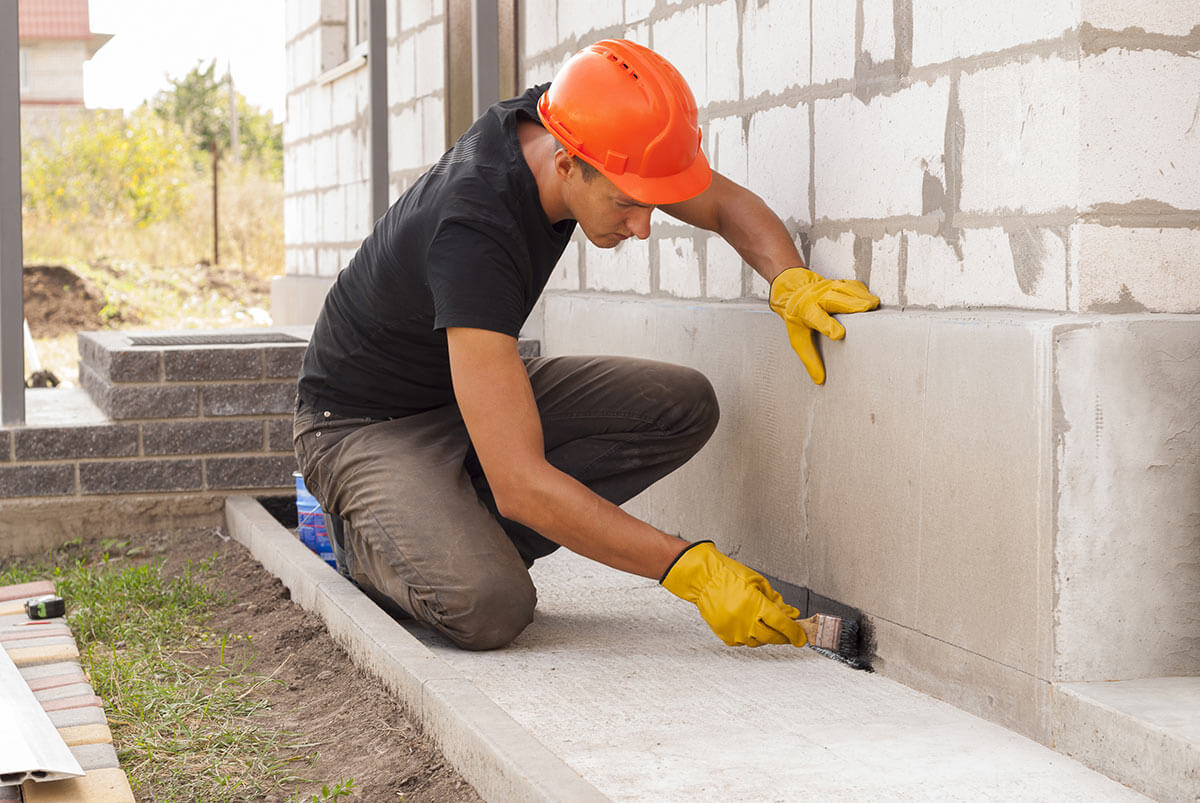
When it comes to the presence of mould and water in your basement, there can be a number of causes, both exterior and interior. In this article, we look at how you can identify where dampness is coming from and how to deal with it. Learn from the pros and say goodbye to basement mould with these handy tips.
How to track where basement leaks come from?
Water leaks in your basement can come from a variety of sources. If you’ve got a leak, chances are it’s coming from the outside of your property. Water follows a path of least resistance, but that doesn’t mean it always heads down. Water can pool in cracks and gaps of the structure and rise over time, like a dam.
If you think you’ve got a leak, you’ll first need to identify where it’s coming from. Investigate the exterior and interior of your home. Pay particular attention to the following areas:
Guttering
You’ll want to clear any blockages that might be causing water to flow where it shouldn’t. You can also investigate any damage to your gutters that might be causing leaks. Investigating gutters can be tricky, make sure you have the right equipment and a partner on hand. If you’re unsure, call in a professional.
Downpipes and drainage
Blockages in your downpipes and drainage systems can be a cause of dampness and mould in the basement. Check your downpipes thoroughly.
Grading from foundation
Ideally, construction of your foundation and excavation of your block should enable water to flow away from the exterior of your premises. If this is not the case, and the slope or gradient of the exterior moves inwards, you’ll see a buildup of standing water around your home. This can lead to leaks, mould and moisture in the basement.
Consider the effects of hydrostatic pressure
The foundation of your house was built by digging a hole in the ground and filling it with foundation material. Between the foundation and the soil there is a gap which is filled with looser soil and gravel. This section is more aerated which in turn means it holds more water.
Over time water can build up in the aerated section between the foundation and the existing soil. That water creates hydrostatic pressure. Essentially, water is heavy and that weight pressing against the foundation can eventually find a way in. When searching for the source of dampness, mould, moisture or leaks in your basement, you should consider the potential effects of hydrostatic pressure.
During construction, waterproofing should be applied to resist the hydrostatic pressure.
Don’t forget about other areas of the home
If the source of a leak can’t be traced, you may want to investigate any crawl spaces or storage areas in your home. Because we don’t often enter these spaces, there’s a tendency to forget about them. This makes them more susceptible to mildew, mould and moisture.
Surface water damage
We already know that your exterior gradient should assist water in moving away from the home, but in situations where it doesn’t there is the problem of standing water.
It might be that the gutters don’t extend far enough beyond the roofline to properly dispose of water or that the gutters are overflowing and expelling water too close to the home. Either way, surface water can create havoc with the basement.
Surface water can also pick up soil which leads to clogged drains and ongoing problems in the foundation. Checking your pipes regularly as well as the egress points for rainwater dispersal to see if you have a standing water problem.
Interior flooding
Not all basement flooding comes from the exterior of the home. Problems with pipes, washing machines and hot water tanks could lead to a flooded basement and a massive inconvenience for you. The most common causes of indoor plumbing are:
- Damaged or leaky water heater
- Rusted, broken or damaged pipes
- Burst washing machine hose
Because water travels along the path of least resistance, even problems on other levels of the home can end up causing flow on water damage in the basement, as gravity does its job.
To prevent indoor plumbing problem there are a few things you can do:
- Replace your washing machine hose with a high quality substitute.
- Have your pipes checked by a plumber
- Replace your water heater with a more reliable option.
Waterproofing and excavation
In some circumstances, an excavation may be needed to fix the problem of a leaky basement. The affected area will be excavated down to the foundation and a new drainage system installed. Waterproofing membranes will also be applied to prevent further water getting in.
Epoxy or polyurethane crack injections
Suitable only in some circumstances, and not necessarily a permanent solution, this solution is used when water seepage comes from the walls and not the floors.
Sump pump installation
If there is already considerable water buildup in the basement a sump pump will help remove the water and keep the peace damp free while remedial efforts are undertaken.
Dehumidifier
A dehumidifier won’t provide a permanent solution, but it is useful for your comfort around the home, particularly if you have breathing issues. Dehumidifiers remove the moisture from the air and keep the place as dry as possible.
Waterproof membranes
Waterproofing membranes provide the most reliable solution to damp and leaky basements. PVC and PVC blend waterproofing membranes are the best way to secure your home from exterior moisture and provide a reliable, long term solution to leaky floors and walls.
Talk to Projex today about how we can help you find a waterproofing solution for your home or basement. Contact us today.